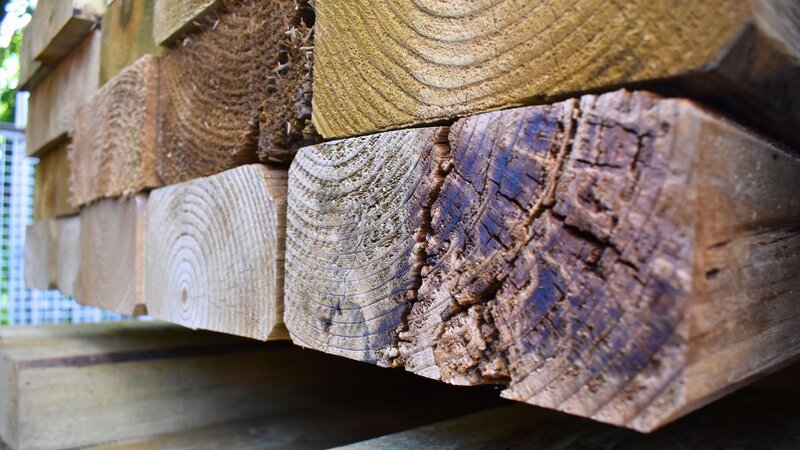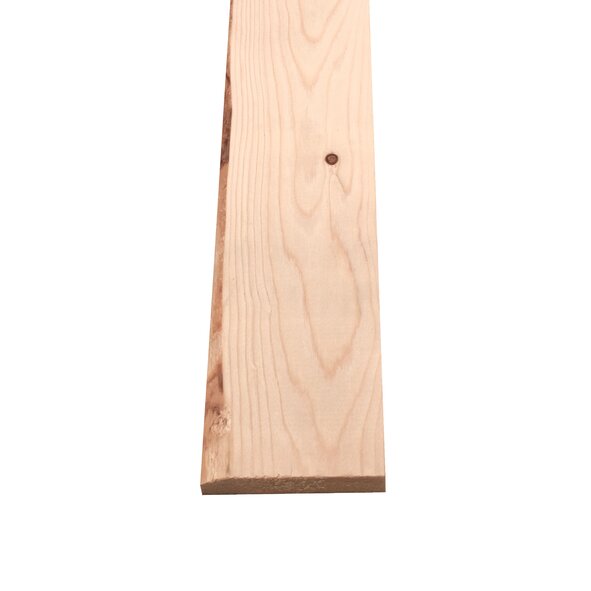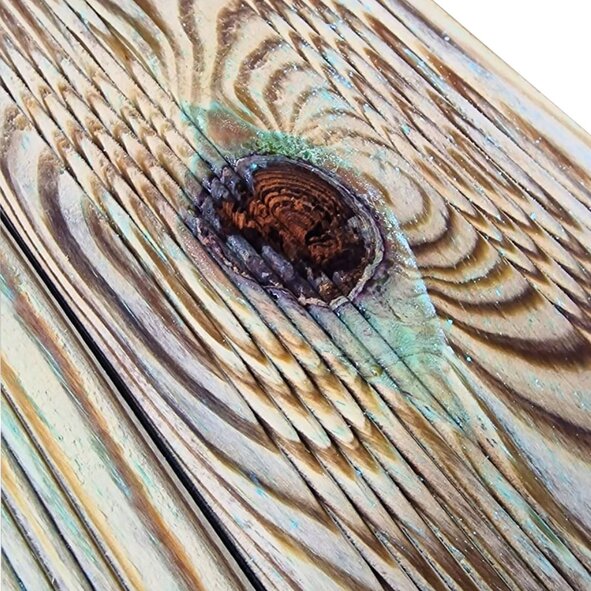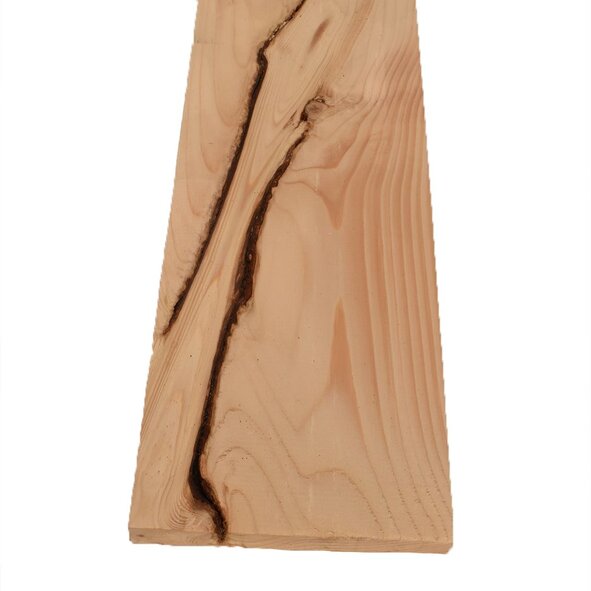21 07 2025
Everything you need to know about Factory-Reject Timber
When browsing timber, you may have noticed two types coming up: “premium” and “Reject”. Maybe you were tempted by the lower, budget-friendly pricing, but didn’t want to risk a product that wasn’t going to deliver the value you need.
Factory rejects aren’t scrap timber. Far from it - it’s wood with personality! It’s a great cost-effective alternative to your DIY needs, but it’s important to know exactly what you’re getting.

What is a “Factory Reject”?
A factory reject (or B-grade timber) is wood that has at least one defect. This can be a variety of things, such as discolouration, wane, cracks, or dead knots. If any timber has just one defect, it will be considered a reject, and will no longer meet our high standards of quality. So B-grade wood can range from a few scratches to being misshapen planks with holes in them.
But does that mean factory rejects are a no go? Absolutely not!
Factory rejects can offer a reliable and sturdy alternative for DIY builds on a budget - so long as you don’t mind a rustic look and can admire the personality and imperfections that these boards bring.
What should I expect from rejected wood?
Reject decking isn't one size fits all. Reject can mean a number of different things, and each board in a pack of B-Grade timber will have their own unique defects. Here are some of the imperfections you can expect to receive in factory rejected wood.
Wane
- Some reject decking and timber products may have some wane. This can occur in wood that has been cut from the edge of the tree, making one of the board’s sides curved. This doesn’t affect the structural integrity of the wood but does make it look aesthetically different to more premium products. But if you’re building decking, wane can simply be faced down and forgotten about, leaving you with a premium look at a discounted price.


Dead knots
Knots are incredibly common in timber, and can often give a piece of wood personality. Knots are where branches used to be on the tree, and so give you an insight on the life your timber had. Dead knots and knot holes occur when a tree’s branch dies while it’s still growing. They tend to be weaker, have a darker colour and can sometimes fall through leaving a hole in the wood. Although they can lead to a weathered look, they rarely impact the structural integrity of boards. So timber with dead knots can still be used in a variety of DIY products, and can remain a sturdy, yet budget-friendly alternative for your decking, fencing or DIY project.
Cracks and Splits
Cracks and splits show the life of a tree. They can come about in various ways, such as if the wood dried too rapidly or unevenly, mechanical damage from the factory, or from natural growth stress. Cracks and splits unfortunately can lead to worse structure damage for planks, but that doesn’t mean they can’t be used - just that they may require more care.
For example, when laying decking, adding an extra joist or two for support can help keep the boards sturdy and strong.

Why choose Reject Decking?
Why would you want a product that's considered a reject? Why not go for a more premium option? Well there are many reasons why B-grade might not just be a great alternative - but also the better choice!
Cost-Effective
With imperfections come lower costs, meaning you can save as you build! Projects like decking, fencing and landscaping can require buying a lot of timber, so opting for rejects means finding a more budget-friendly alternative to your project - especially one that can be hidden - like flower bedding borders. So for cheap decking, landscaping or DIY in general, why not go for B-Grade?
Environmentally friendly
Reject wood is timber that has some kind of defect, and would usually be thrown away as waste. When you opt for factory reject timber, you’re preventing materials from ending up in landfill or being destroyed. That means that fewer trees need to be chopped down and fewer machines need to be used to cut the materials to size. So each time you buy reject wood, you’re helping the planet that little bit more.
A Hidden Gem
Why pay for aesthetics when your wood won’t be on full display? Most of the time reject wood is just as durable and sturdy as the premium versions - just with a rougher look and a bit of wear and tear. So when your project consists of laying down sleepers to separate your lawn from your flower beds, or decking floor boards that will only ever be seen from one angle - why not opt for a cheaper alternative that could last just as long?
Where can you buy reject wood?
Reject Timber is sold at many outlets, as various products. For example, Snowdon Timber sells a wide range of rejected Timber, including:
Reject decking boards (which can be used for fencing, railing, and other outdoor builds)
Sleepers
Battens
